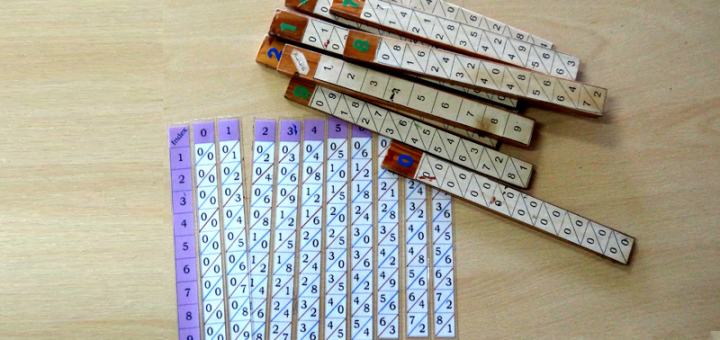Napier’s Bones

Material Required: Cardboard or chart paper.
John Napier (1550-1617), the man who invented the logarithmic tables also made this simple calculation device. Napier’s bones can be used for multiplying a large number with a single digit number. In this way it reduces multiplication to a series of additions.
Take nine long strips of chart paper or cardboard, 1 inch wide and 9 inches long. Copy the numbers shown in the figure on the nine strips in the manner shown along with the diagonal lines. Now, to multiply 2356 by 8, take the bones with the digits 2, 3, 5 and 6 and lay them next to each other. On the 8th horizontal row add the digits that are formed along each diagonal to get each digit of the answer.
The method of adding along the diagonals used here is very similar to the Gelosia method of multiplication developed by Indian mathematicians many centuries ago. It is also quite similar to the method of multiplication taught at school. On observing closely one finds that each of Napier’s bones is simply the multiplication table for that number (verify this from the figure). The digits in the units place and the tens place are written separately. So while using Napier’s bones, one need not make the effort of recalling multiplication tables. Addition of digits, carrying over the digit in the tens place are managed by the diagonal arrangement.

